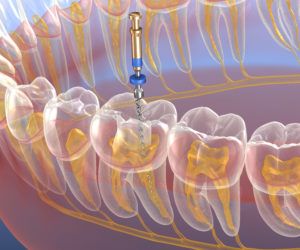Hi Sereyians, today would like to take us through some important aspects of Endodontics which is a very important part of dentistry and the area of scope in this post is Diagnosis and Treatment Planning as regards Endodontics.
Without taking much of your precious moments let's Serey on
First of all, what is Endodontics?
Endodontics is the aspect of dentistry that has do with the internal structures of the tooth which include: Pulp, Root canal, pulp chamber, accessory canal and their associated management and treatment
Now what is Endodontic diagnosis?
Endodontic diagnosis is the analytical steps taken in identifying the state of pulpal and periapical health of a tooth/teeth in order to arrive at a suitable and necessary treatment plan
Some of key points a dentist or an Endodontist need to extract out during diagnosis are as follows:
Primary cause of the complaint (pain or discomfort) whether is of dental origin, the symptoms or signs being peculiar to either pupal or periodontal origin, the state of health of the pulp based on the presenting complaints by the patient and likewise the possibility of getting the patient treatment successfully based on available circumstances, clinical expertise and so on.
However an irreversible treatment should be avoided by the dentist until a definitive treatment is established.
It is important to note that diagnostic errors usually occur when the analytical approach is not done in a systematic and conventional way or some of the steps required have been missed or omitted.
Owing to the aforementioned reason, the clinician will end up investigating wrong factors and eventually formulating incorrect and unmatched treatment plan.
At this juncture, I will give some examples of some oro-facial pain that are not of dental origin in which a half-baked dentist or clinician could misinterprets it as of dental origin when systematic analysis and findings were not followed during diagnosis. Examples include:
Extraoral pain from infected salivary glands, vascular disease of associated oro-facial structures such lymphadenitis, edema and trauma of extraoral structures
Moreover pain from musculoskeletal origin such as muscle cramp or pain of masticatory muscles, Temporomandibular joint dysfunction which may cause trismus, myocardial infarction of the heart in which pain is referred to the lower jaws of the face and so on.
Furthermore, a pain could be neuropathic ( such post- herpetic neuralgia, trigeminal neuralgia etc) or neurovascular such cluster headache and could be psychogenic such as anxiety disorders or feeling of pain in the oro-facial structures with no actual dental causes or dental origin.
To avoid much lengthy explanation and buttressing, I would stop here at least for now and we will start lecture 2 in subsequent post from the stages or clinical that should be taken in order to arrive at a definitive diagnosis during clinical procedure
Thanks a lot for following up the write-up and Stay Blessed
For more information check here
Cross-Posted from my BLURT Account


Comments